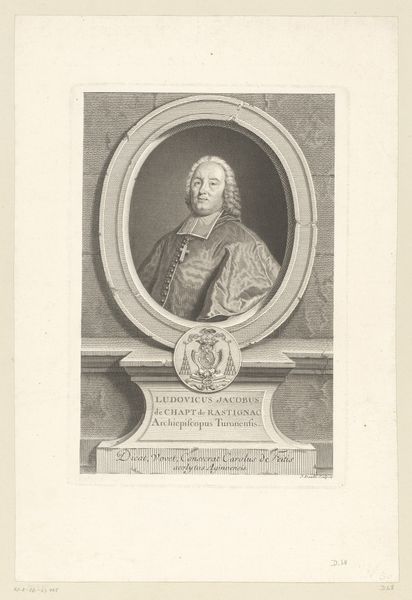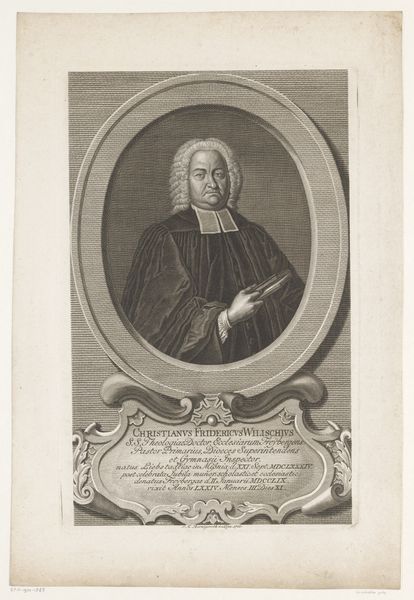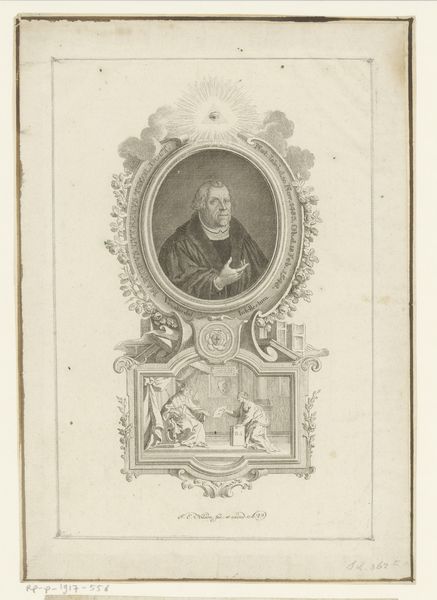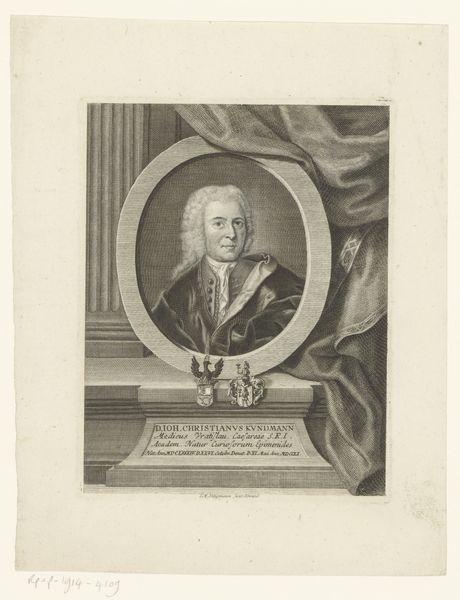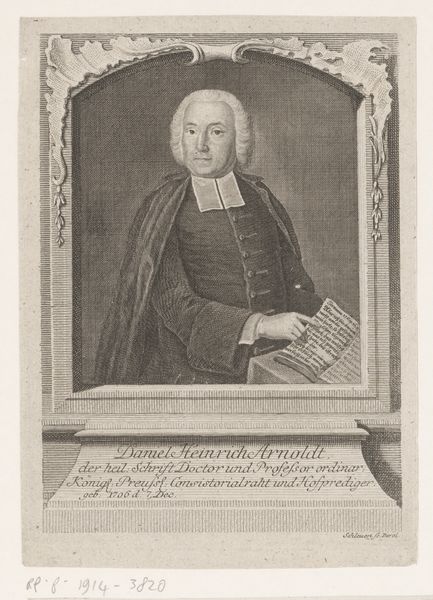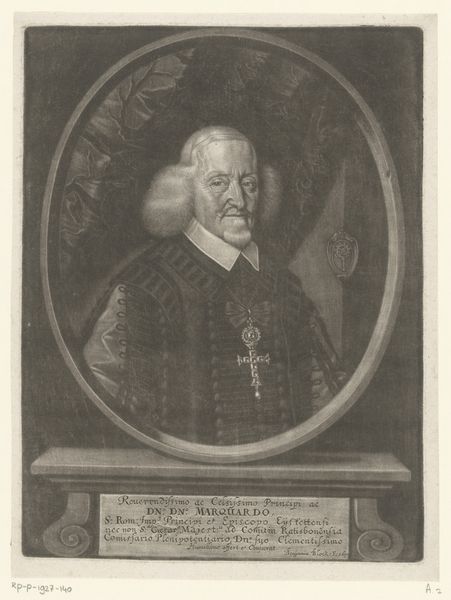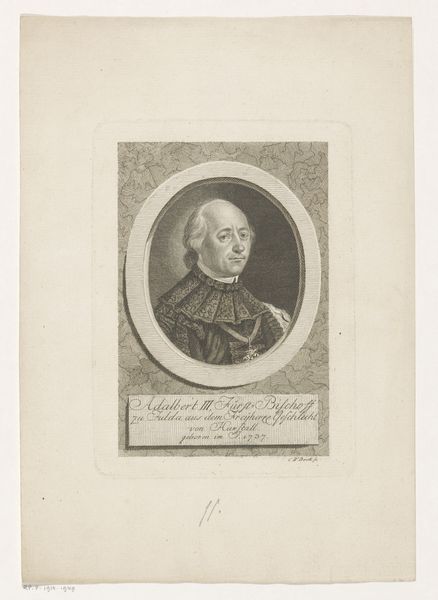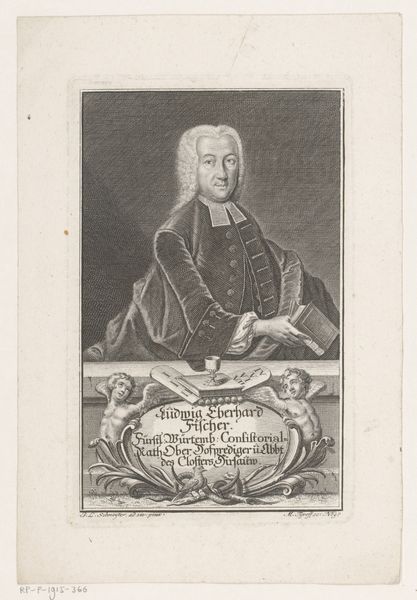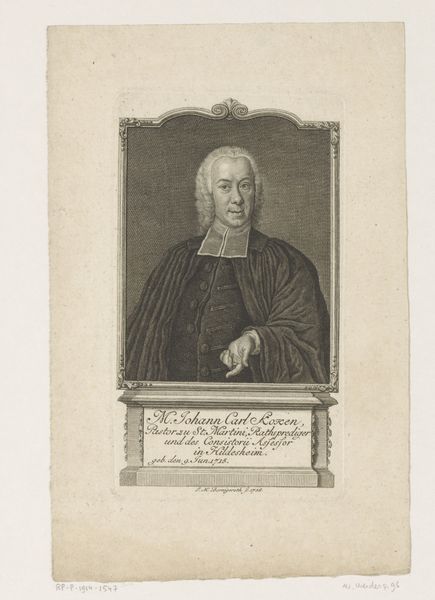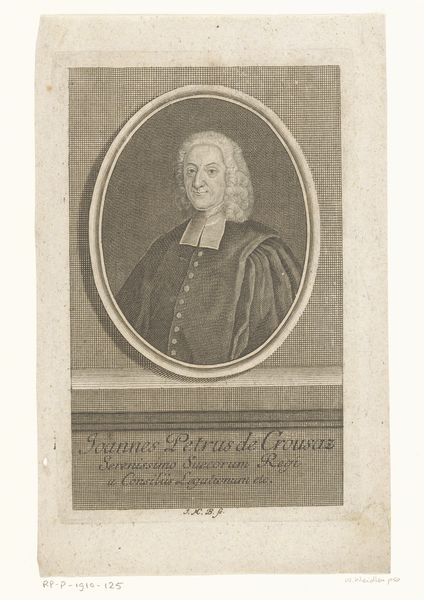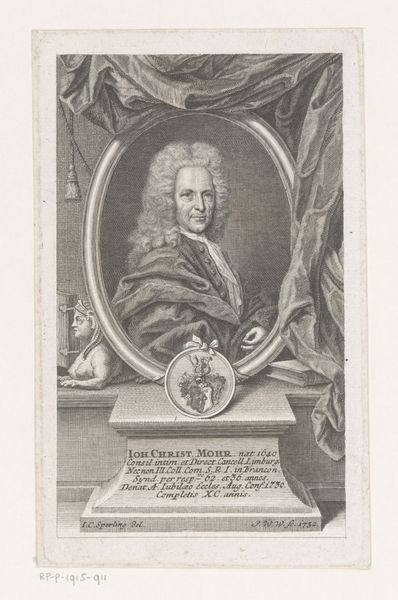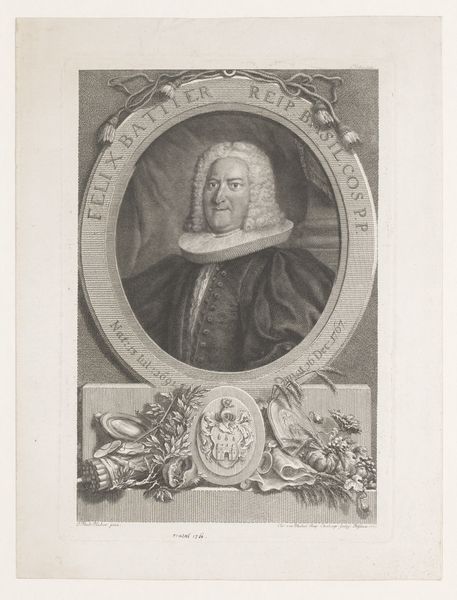
print, engraving
#
baroque
# print
#
old engraving style
#
engraving
#
realism
Dimensions: height 139 mm, width 80 mm
Copyright: Rijks Museum: Open Domain
Curator: This print, executed in 1755 by Johann Christoph Sysang, depicts Johann Christoph Harenberg. What strikes you first about this portrait? Editor: Immediately, I’m drawn to the formality and the slight melancholy. It exudes a certain institutional weight. It is more than a mere likeness; it speaks to Harenberg’s position. Curator: Harenberg was, as the inscription tells us, a Doctor of Holy Scripture and provost of the monastery of St. Lawrence. Considering the context of 18th-century religious authority, how might this portrait function as a statement of power? Editor: Well, look at the architectural frame. It gives a sense of the solid structures surrounding him: the church, the monastery, the societal framework that legitimized him. The gaze is unwavering; he is looking down on the viewer, an assertion of authority in a hierarchical social environment. And notice how this echoes gender, power and religious structure still resonant today? Curator: Absolutely. We see how these power dynamics, deeply rooted in the Baroque and informed by religious and political institutions, continue to permeate the cultural landscape. How the politics of imagery served to uphold specific narratives about identity. Editor: This engraving offers an insightful reflection into a system and how that system chose to portray its leaders and therefore reinforce its image through careful design choices. Even something as minute as the folds of his gown contribute to his elevated status. It encourages one to consider what is valued at that time and consider what continues to be valued, today, with this portrait-style tradition. Curator: I agree. By analyzing such a work through the lens of institutional history and broader cultural movements, it exposes the intricate connection between art and power. The role of portraits is more complex than just mirroring an individual, serving a more impactful objective as a marker of societal hierarchies. Editor: A fascinating peek at the cultural history that produced this, one might argue, fairly conventional yet extremely powerful image. Thank you!
Comments
No comments
Be the first to comment and join the conversation on the ultimate creative platform.
